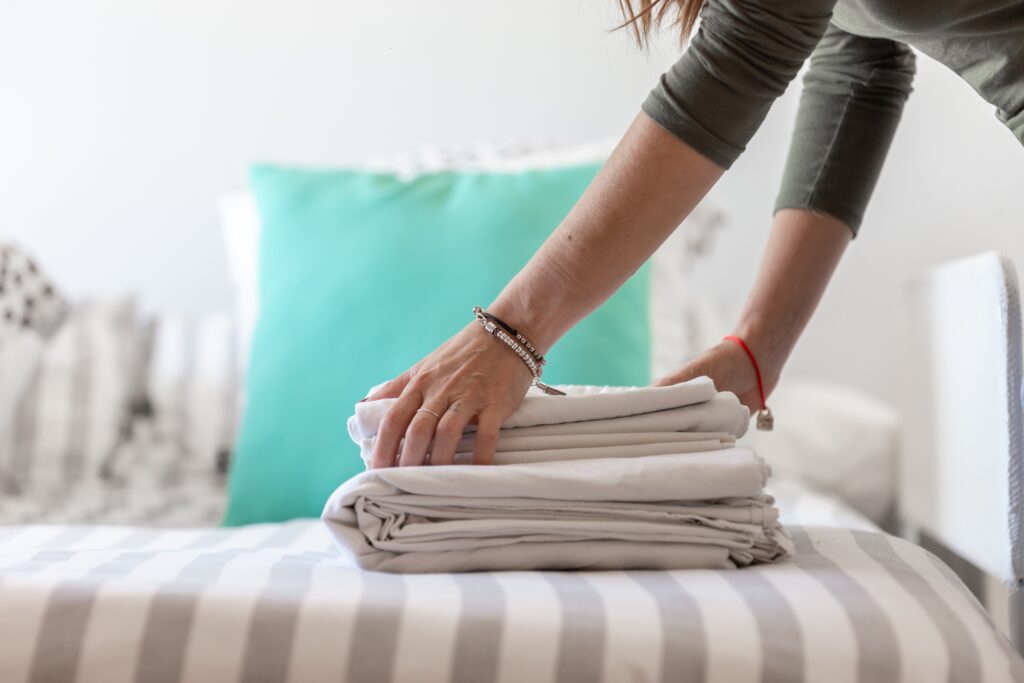Moving bedding… how hard can it be? Of all the items in your house, it must surely be the easiest to move because it can’t get broken like glassware, pictures or plates. As many people discover when they don’t pack bedding properly, they have dusty, dirty or torn bedding when they arrive. And that’s not the way you want to spend your first night in your new home. So let’s dive in and look at how to move your bedding so it arrives clean, comfy and immediately ready for making the bed.
1. Packing materials
- Large cardboard boxes. You don’t need packing boxes for bedding, but we recommend using them regardless, as they offer the best protection.
- Packing paper. Never use old newspapers for any clothes, linen or bedding.
- Large, clean plastic bags.
- Packing tape and a permanent marker pen to label your boxes.
-
Cleaning
Wash and dry the bedding you want to use on beds when you make them for your first night at your new home. Clean bedding is comforting and helps you sleep. You’ll appreciate having it for your first night.
-
Make up your boxes
- Bedding is lightweight, so use large boxes. Assemble the box and place it topside down.
- Seal the bottom centre seam with packing tape. Start from the side and cross over to the other side so the tape is one continuous piece about a third of the way up each side of the box.
- Test the centre seam. If it doesn’t feel solid, add another strip of tape. Repeat if necessary.
- Tape the side seams.
- There’s no need to pad or line the box as you would if you were packing breakables.
-
Neatly fold your bedding
There are two reasons to fold your bedding as neatly as you can. First, you won’t have crumpled sheets or blankets, and second, it reduces the volume, making packing easier. When you fold your duvet, which will have the largest volume, you will need to fold it into the same shape as your large plastic bags.
-
Package your bedding in plastic bags
Pillows, sheets and blankets are easy to wrap in plastic bags, but your duvet can be a bit more challenging. This job is often easier with two people, but you can manage it alone if necessary. Pull the bag around the duvet so it retains its folded shape. Once you have bagged all your bedding, seal the open sides of the bags so dirt and dust doesn’t get in.
-
Pack your boxes
You have two options when it comes time to pack your boxes. First, you can use your parcels of bedding for top and bottom cushioning in boxes with breakables. This is fine for extra bedding you don’t plan to use straight away. You should pack all the bedding you need for your first night in the same boxes, so it’s easy to locate. If you have several boxes, try to pack them by the room they belong to.
-
Label boxes
Make sure you label each box with bedding and the room where it belongs. Have you ever tried to put a duvet into the wrong sized cover or made the bed with the wrong size of fitted sheet for the mattress? Labelling will make your life much easier when unpacking and avoid mismatches.
-
Loading the boxes into the truck
Bedding boxes never support weight, as they can crumple. To ensure they are always loaded at the top of the truck – lable your boxes so your movers know what’s inside the box.
